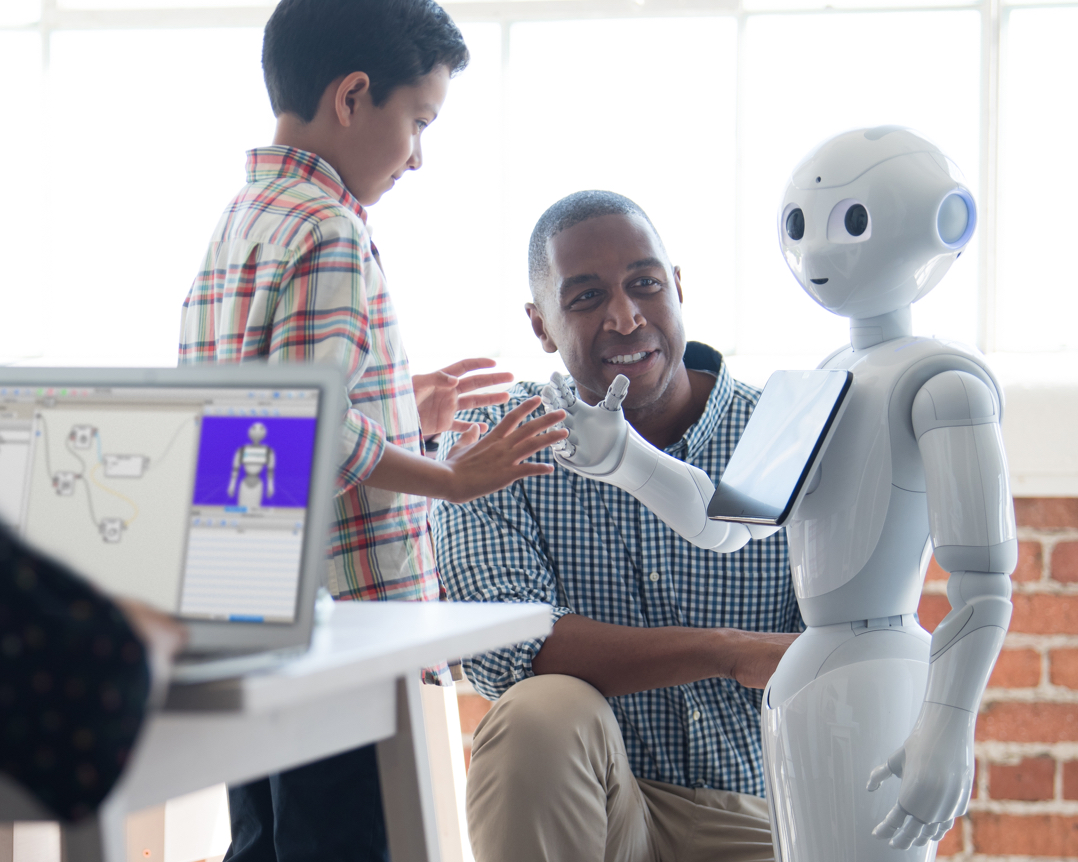The rise of the robo-restaurant: AI is ready to take your order

The future is served.
Image: REUTERS
Stay up to date:
Fourth Industrial Revolution
Have you ever stood at the counter of a fast-food restaurant unsure of what to order? Well, that could become a thing of the past – artificial intelligence is cooking up something especially for you.
Many restaurants have already deployed automation, artificial intelligence and machine learning, using innovations such as chatbots to guide customers through menus and help them order. But the next wave of food service automation is going even further. Here’s how.
Pay with your face
KFC is using facial recognition and AI in China. A large interactive screen greets customers with an image of themselves, taken from in-built cameras. After guiding them through the order process, and entertaining them along the way, the AI has learned two things: what they look like and what they like to eat. It lets people pay using facial recognition too, and the next time they visit it will not only recognize them, it will remind them of their last order.
Burger-flipping robots
Californian burger chain CaliBurger has employed Flippy, a real-life robot chef, in the kitchen of its Pasadena restaurant. Using on-board sensors and cameras, it prepares, cooks and plates up food. It can see when a burger needs to be flipped and detect the temperature of the food it is cooking.
AI that says, hi
Pepper is a waiter and meet-and-greet robot for the food service and retail sectors. It interacts with customers via voice recognition and an integrated tablet, and in a restaurant setting can answer questions, make recommendations and take diners’ orders. Developed by Japanese technology firm SoftBank in partnership with Mastercard, it also takes payments. It’s in use at Pizza Hut in Singapore and the French supermarket chain Carrefour.
Identify what’s on your plate
TellSpec is a scanner that decodes the food on your plate at a molecular level, supplying detailed information on calories, macronutrients, and allergens. The company behind it also makes products that can analyze the content of baby milk powder, the freshness of fruit, and the provenance of fish.
Driving through change
McDonald’s has acquired a Silicon Valley-based voice recognition firm. The technology will help improve the speed and accuracy of taking orders at Drive Thru facilities. Rather than merely recognizing commands, it will be able to handle complex orders in multiple accents and languages, McDonald’s says.
Robo-bucks
Investment in automation in the food sector is on the rise. In 2018, the sales value of the market in China alone amounted to more than $123 million, and by 2025 it’s estimated more than $500 million worth of robots will have been sold to the global food and beverage industry.
Don't miss any update on this topic
Create a free account and access your personalized content collection with our latest publications and analyses.
License and Republishing
World Economic Forum articles may be republished in accordance with the Creative Commons Attribution-NonCommercial-NoDerivatives 4.0 International Public License, and in accordance with our Terms of Use.
The views expressed in this article are those of the author alone and not the World Economic Forum.
Related topics:
Forum Stories newsletter
Bringing you weekly curated insights and analysis on the global issues that matter.
More on Fourth Industrial RevolutionSee all
Cathy Hackl
April 21, 2025
Aimée Dushime
April 18, 2025
Zara Ingilizian and Oliver Wright
April 18, 2025
Dylan Reim and Judith Vega
April 17, 2025
Emmanuel Gatera
April 16, 2025







